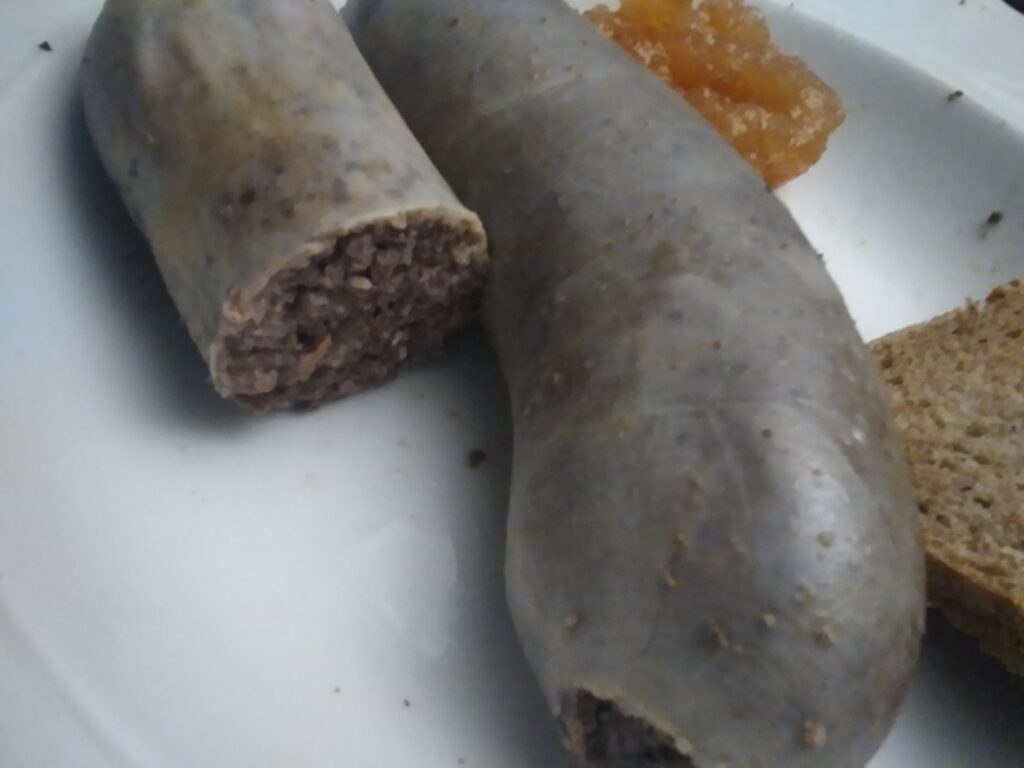I am back from a long weekend in Nuremberg spent in the delightful company of a five year old. Hence less medieval Romanticism and more railway enthusiasm. The DB Museum is an awesome place to bring children if you are in the neighbourhood, by the way. I am, however, too tired to write very much. Hence, a short recipe. It is interesting, not necessarily appetising:

27 A Roast Dish (brauten)
Take the rectum (arßdarm) of a calf and clean it thoroughly. Chop the lungs together with bacon and fill it into the intestine. Spice it and boil it, then lay it on a griddle and roast it.
This recipe recurs many times, including in both Meister Hans and the Rheinfränkisches Kochbuch, and I already experimented with recreating a version of it. From a technical perspective, it makes eminent sense. When slaughtering a calf, neither the lungs nor the rectum are good candidates for preservation. This way, they can be turned into a dish that is solid and roastable and can be sliced at the table, which qualifies it as a main course, a status often indicated by the term braten. Once prepared – most likely boiled in the same cauldron that was used to cook other sausages and organ meats – a lung sausage like this would last for a few days or even weeks if properly smoked, but it was not something you could lay in as supplies. Depending on the occasion, it could be served as part of the Schlachtfest, given to servants while the quality enjoyed fresh muscle meat, or kept to enjoy next week when the last of the very fresh veal was gone.
By way of information: the rectum is the fat-lined part of the gut that directly precedes the anus. It is known to butchers as Fettdarm or Afterdarm and used in a number of traditional preparations. Klobwurst and some varieties of liver sausage are still cooked and smoked in the rectum. It is no more or less unhygienic or icky than any other part of the intestine and perfectly edible, though not a pleasure to chew. However, it is not easy to source. Few traditional butchers part with it, and most meat processors do not save it separately. I recommend substituting large intestine if you cannot get it.
Bound together with medicinal, veterinary, and magical texts, the culinary recipes of Munich Cgm 384 were partly published in 1865 as “Ein alemannisches Büchlein von guter Speise“. The manuscript dates to the second half of the fifteenth century. My translation follows the edition by Trude Ehlert in Münchner Kochbuchhandschriften aus dem 15. Jahrhundert, Tupperware Deutschland, Frankfurt 1999, which includes the first section of recipes not published earlier.
